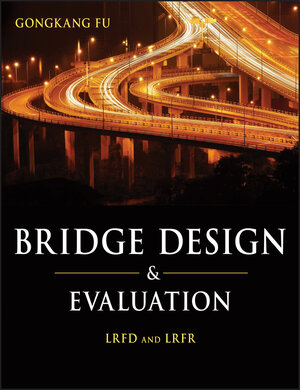
×
![Buchcover ISBN 9781118329931]()
A succinct, real-world approach to complete bridge systemdesign and evaluation
Load and Resistance Factor Design (LRFD) and Load and ResistanceFactor Rating (LRFR) are design and evaluation methods that havereplaced or offered alternatives to other traditional methods asthe new standards for designing and load-rating U. S. highwaybridges. Bridge Design and Evaluation covers complete bridgesystems (substructure and superstructure) in one succinct, manageable package. It presents real-world bridge examplesdemonstrating both their design and evaluation using LRFD and LRFR. Designed for a 3- to 4-credit undergraduate or graduate-levelcourse, it presents the fundamentals of the topic without expandingneedlessly into advanced or specialized topics.
Important features include:
* Exclusive focus on LRFD and LRFR
* Hundreds of photographs and figures of real bridges to connectthe theoretical with the practical
* Design and evaluation examples from real bridges includingactual bridge plans and drawings and design methodologies
* Numerous exercise problems
* Specific design for a 3- to 4-credit course at theundergraduate or graduate level
* The only bridge engineering textbook to cover the importanttopics of bridge evaluation and rating
Bridge Design and Evaluation is the most up-to-date andinclusive introduction available for students in civil engineeringspecializing in structural and transportation engineering.
Load and Resistance Factor Design (LRFD) and Load and ResistanceFactor Rating (LRFR) are design and evaluation methods that havereplaced or offered alternatives to other traditional methods asthe new standards for designing and load-rating U. S. highwaybridges. Bridge Design and Evaluation covers complete bridgesystems (substructure and superstructure) in one succinct, manageable package. It presents real-world bridge examplesdemonstrating both their design and evaluation using LRFD and LRFR. Designed for a 3- to 4-credit undergraduate or graduate-levelcourse, it presents the fundamentals of the topic without expandingneedlessly into advanced or specialized topics.
Important features include:
* Exclusive focus on LRFD and LRFR
* Hundreds of photographs and figures of real bridges to connectthe theoretical with the practical
* Design and evaluation examples from real bridges includingactual bridge plans and drawings and design methodologies
* Numerous exercise problems
* Specific design for a 3- to 4-credit course at theundergraduate or graduate level
* The only bridge engineering textbook to cover the importanttopics of bridge evaluation and rating
Bridge Design and Evaluation is the most up-to-date andinclusive introduction available for students in civil engineeringspecializing in structural and transportation engineering.



